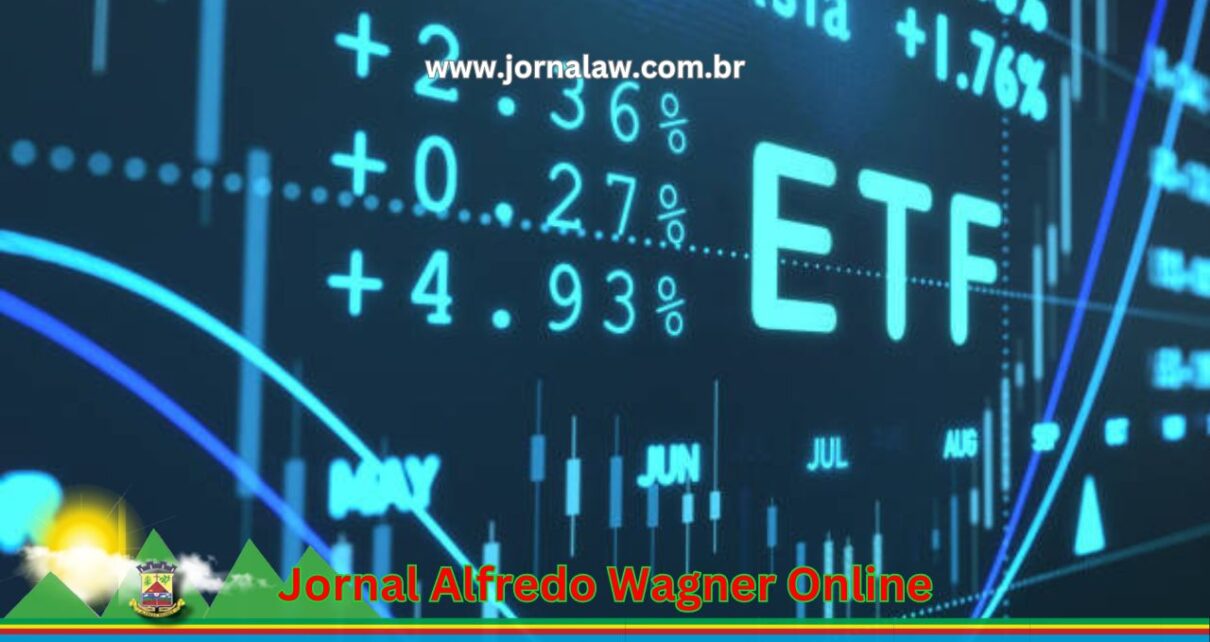By João Paulo Fernandes, CEO of Cada Investments
The ETF (Exchange Traded Funds) market in Brazil is still in its infancy, but it is undergoing a period of transformation and accelerated growth. Today, we have approximately R$50 billion allocated to this asset class, which represents only 0.5% of the total fund market. In comparison, in the United States, ETFs already account for more than 32% of the fund market. The gap between the two markets, however, shows an opportunity. In fact, Brazil is advancing at a fast pace, with percentage growth rates higher than those observed in the United States. This scenario leads us to reflect on the challenges, opportunities and growth potential of this market, as well as how we can learn from international benchmarks to drive this evolution.
One of the main challenges for the wider adoption of ETFs in Brazil is to promote simpler and more assertive communication, facilitating access and understanding of the product by individual investors, in addition to the need for greater dissemination of this type of investment among the general public. Many still associate the stock market only with trading stocks or high-risk assets, ignoring the diversity of products available, such as fixed-income, commodity and international ETFs. This stigma, combined with the lack of familiarity with how index funds work, keeps a large portion of Brazilians away from the ETF market. In addition, limited adoption by distributors, such as brokerages and advisory firms, also represents a challenge. Because they are relatively new in Brazil and have a different distribution dynamic, these assets have not yet been widely incorporated into the platforms of these institutions.
However, evolution is natural. The Brazilian investor cycle is still short, but we are moving forward quickly, with ETFs gaining more and more popularity. This movement is driven by a greater awareness of the benefits of these products, such as transparency, low cost and diversification. In this sense, the United States serves as an important benchmark. There, the market has already evolved both in terms of supply and demand for index funds, and American investors understand that these factors are fundamental to long-term success.
Advances in Brazil and a path to follow
In Brazil, CVM Instruction 179 was an important step towards increasing transparency in the financial market, favoring ETFs. However, we still need to make progress on tax and operational issues. For example, the lack of standardization of income tax collection between fixed and variable income ETFs and the lack of tax equality between asset classes are barriers that need to be overcome. In addition, it is essential that brokerage firms adapt their suitability processes, allowing conservative investors to have access to fixed income ETFs, for example.
I am extremely optimistic about the future of ETFs in our country. I believe that the market could grow considerably in size over the next five years. On the supply side, we see more and more managers developing new products, and there is room to fill gaps and create innovative theses. On the demand side, the regulatory and operational agenda, led by CVM and B3, respectively, should further foster the growth of these products.
Education as a starting point
Investor education is a fundamental pillar for the growth of ETFs. The market still lacks the necessary training to explain that, although these products are sophisticated internally, they are simple and efficient for investors. Financial institutions play a crucial role in this process, but they need commercial incentives to adopt and promote ETFs more actively. CVM Instruction 179, by promoting transparency of distribution costs, is already reformulating the incentives for distributing financial products. Now, the focus is on offering the product that best suits the client’s profile, and not the one that generates the highest remuneration for the advisor. This change is a boon for the growth of ETFs, which are naturally transparent and cost-efficient.
In conclusion, the ETF market in Brazil is on an upward trajectory, driven by a combination of factors: regulatory evolution, greater transparency, and an increasingly aware investor. Despite the challenges, the growth potential is enormous, and I believe that ETFs will soon dominate the Brazilian market, following the example of the United States. It is up to us, as managers and educators, to continue to promote this asset class, simplifying its complexity and highlighting its benefits for the investor. The future is bright, and ETFs are at the center of this transformation.
About the author
João Paulo Fernandes is CEO of Cada Investimentos, an asset management company specializing in index funds and ETFs. With over ten years of experience in the financial market, he has worked at Itaú BBA and Teva Indices. With a master’s degree in economics from Insper and a bachelor’s degree in economics from UFABC, João combines solid academic training with a practical career focused on creating efficient and accessible solutions in the Brazilian financial market.
Carolina Cardoso
Customer Service Executive



